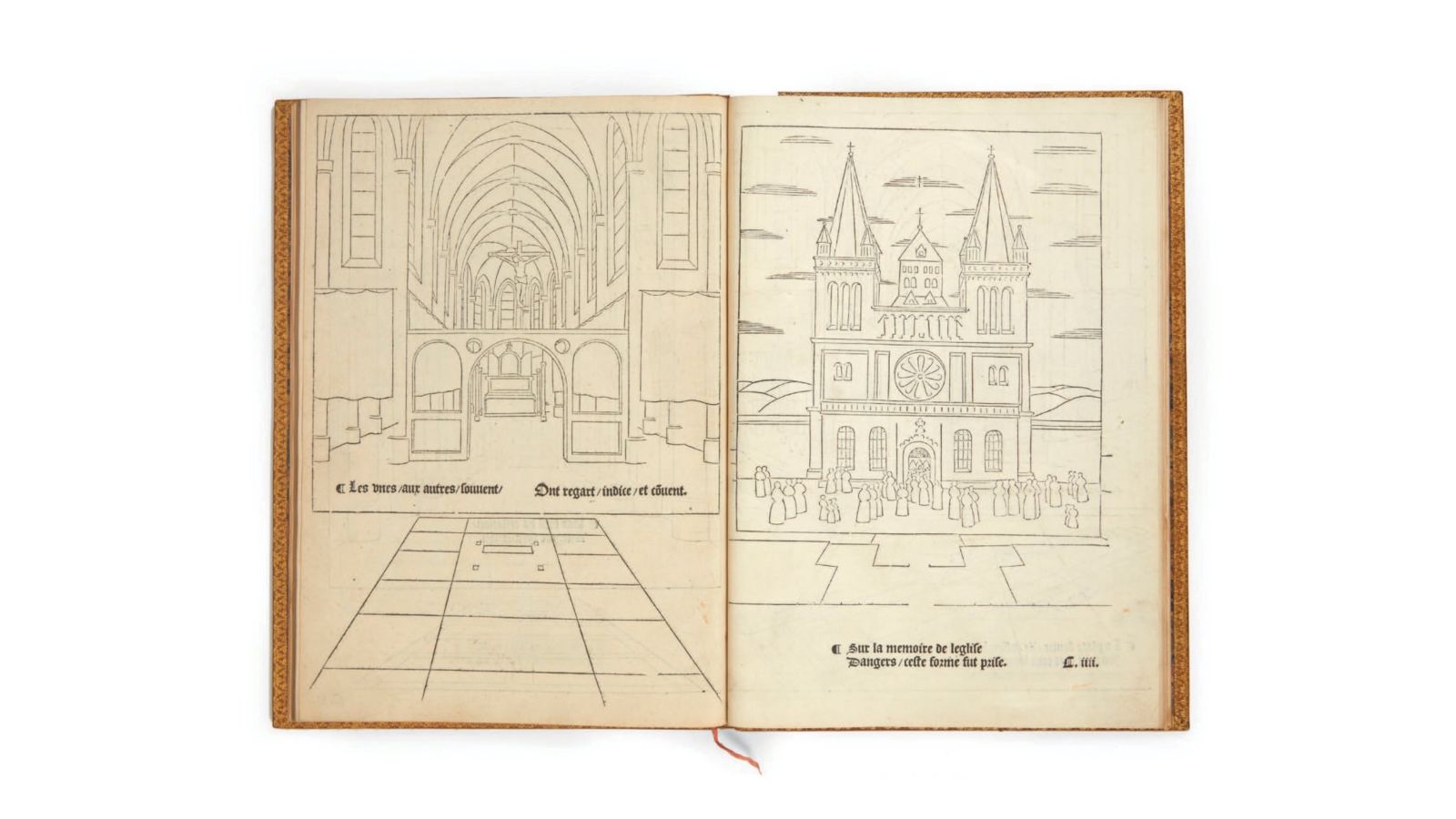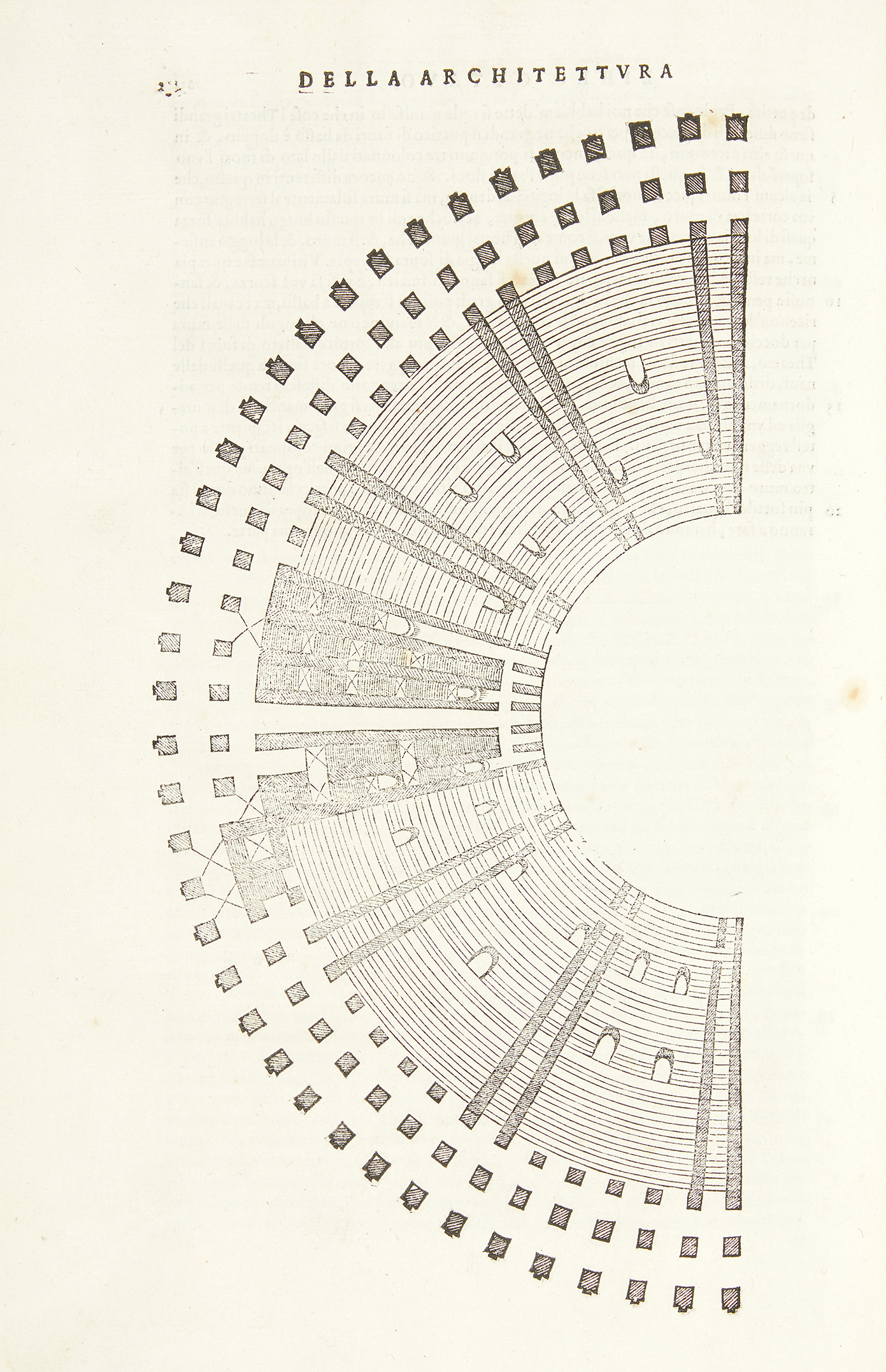PIERRE BERGÉ & ASSOCIÉS - Thomas Vroom Collection, History of Perspective
Les 14 et 15 novembre 2019Experts: Bernard and Stéphane Clavreuil
Thursday 14 and Friday 15 November, the auction house Pierre Bergé & Associés will disperse the Thomas Vroom Collection. For forty years, the aesthete and passionate about Italian painting gathered treaties on perspective written by artists and scientists. At the time of its dispersal, the collection includes approximately 400 books, estimated around €2M.
“The origins of my passion as a collector lay in Italy. At the beguinning I was above all interested in “the art of flat surface” near Siena. When I was fifteen, I visited the Palazzo Ducale with my parents at Urbino in Tuscany where the wonderful fresco by Piero della Francesca – Christ flagellation – triggered my fascination for perspective. How do artists manage to create perfect perspective from surfaces, lines, colors, figures, forms and proportions? From this fascination, I gathered a collection of books written by scientists and artists from 15th to 20th centuries. I was glad to gather these writings during the last forty years and I hope that all these fine books will find a place within the collection of other passionate collectors.” Thomas Vroom, Holten, November 2019.
The auction offers scientific works which trace the emergence and the evolution of these new rules on volume representation in Italian, Dutch, French, Belgian and German artistic centers.
These books were aimed at responding to intellectual and social stakes of their times. In the 15th century, the implementation of space geometry rules and the use of measurement devices involved in perspective enshrine painting among liberal sciences as mathematics.
This new perception of painting is represented in the books’ frontispieces: allegories of arts and mathematics as well as representations of the artist with his tools as a man of science. The pages of the treaties show complex drawings of geometrical shapes, architectural elements and body observations as well as optical theaters.
In that respect, optical illusion is examined from all angles. From Euclidean geometry to panoptic polyramas through camara oscura, this auction entitled “History of perspective” offers the eventful journey of the exploration of three dimension.
PELERIN, Jean known as VIATOR (v. 1433-1440 - v. 1524). Artificiali P[e]rspectiva. Viator Secundo. Toul, Pierre Jacobi, 1509.
Second original edition of the first print treaty on perspective in Europe. 19th century binding.
Jean Pèlerin was born between 1433 and 1440 in Vihiers, near Saumur in the French region of Anjou. After studying Law in Poitiers or Angers, he takes holy orders when still very young. He worked at the court of Louis XI as in charge of multiple diplomatic missions and developed tight links between the artistic circles of René d’Anjou’s court and the patron Prince René II of Lorraine. He became Philippe de Commymes’ chaplain and met the most famous illuminator-painters of the time, such as Jean Fouquet, Jean Colombe and Jean Poyet. From 1483, he became canon of the little town of Saint-Dié in French Vosges. Thereafter in 1498, when he was named canon of the episcopal city of Toul, he met the greatest minds of his time. At that time, Saint-Dié was a center of French Renaissance and one of the most important centers of Humanism in Europe. Located on the road that connects Paris to the cities of Strasburg, Sélestat, Heidelberg and Freiburg, the little town had created a Brothers school – the “Gymnase vosgien”- under the protection of Duc II of Lorraine and the Vatican.
Apart from its latin school, the Gymnase vosgien was also a printing house. It was in 1505 that was published the Gymnase vosgien’s first book, De Artificiali Perspectiva by Jean Pèlerin, in Latin and in French. It was the first treaty on perspective ever published in Europe as the works of Alberti, Piero della Francesca, Filatere and Foppa were circulating only in manuscript copies.
This second original edition of this treaty from 1509 is presented at auction. Jean Pèlerin drafts a theory of perspective following the techniques used in French and Flemish art.
Estimate: €400,000-600,000
Thursday 14 and Friday 15 November, the auction house Pierre Bergé & Associés will disperse the Thomas Vroom Collection. For forty years, the aesthete and passionate about Italian painting gathered treaties on perspective written by artists and scientists. At the time of its dispersal, the collection includes approximately 400 books, estimated around €2M.
“The origins of my passion as a collector lay in Italy. At the beguinning I was above all interested in “the art of flat surface” near Siena. When I was fifteen, I visited the Palazzo Ducale with my parents at Urbino in Tuscany where the wonderful fresco by Piero della Francesca – Christ flagellation – triggered my fascination for perspective. How do artists manage to create perfect perspective from surfaces, lines, colors, figures, forms and proportions? From this fascination, I gathered a collection of books written by scientists and artists from 15th to 20th centuries. I was glad to gather these writings during the last forty years and I hope that all these fine books will find a place within the collection of other passionate collectors.” Thomas Vroom, Holten, November 2019.
The auction offers scientific works which trace the emergence and the evolution of these new rules on volume representation in Italian, Dutch, French, Belgian and German artistic centers.
These books were aimed at responding to intellectual and social stakes of their times. In the 15th century, the implementation of space geometry rules and the use of measurement devices involved in perspective enshrine painting among liberal sciences as mathematics.
This new perception of painting is represented in the books’ frontispieces: allegories of arts and mathematics as well as representations of the artist with his tools as a man of science. The pages of the treaties show complex drawings of geometrical shapes, architectural elements and body observations as well as optical theaters.
In that respect, optical illusion is examined from all angles. From Euclidean geometry to panoptic polyramas through camara oscura, this auction entitled “History of perspective” offers the eventful journey of the exploration of three dimension.
PELERIN, Jean known as VIATOR (v. 1433-1440 - v. 1524). Artificiali P[e]rspectiva. Viator Secundo. Toul, Pierre Jacobi, 1509.
Second original edition of the first print treaty on perspective in Europe. 19th century binding.
Jean Pèlerin was born between 1433 and 1440 in Vihiers, near Saumur in the French region of Anjou. After studying Law in Poitiers or Angers, he takes holy orders when still very young. He worked at the court of Louis XI as in charge of multiple diplomatic missions and developed tight links between the artistic circles of René d’Anjou’s court and the patron Prince René II of Lorraine. He became Philippe de Commymes’ chaplain and met the most famous illuminator-painters of the time, such as Jean Fouquet, Jean Colombe and Jean Poyet. From 1483, he became canon of the little town of Saint-Dié in French Vosges. Thereafter in 1498, when he was named canon of the episcopal city of Toul, he met the greatest minds of his time. At that time, Saint-Dié was a center of French Renaissance and one of the most important centers of Humanism in Europe. Located on the road that connects Paris to the cities of Strasburg, Sélestat, Heidelberg and Freiburg, the little town had created a Brothers school – the “Gymnase vosgien”- under the protection of Duc II of Lorraine and the Vatican.
Apart from its latin school, the Gymnase vosgien was also a printing house. It was in 1505 that was published the Gymnase vosgien’s first book, De Artificiali Perspectiva by Jean Pèlerin, in Latin and in French. It was the first treaty on perspective ever published in Europe as the works of Alberti, Piero della Francesca, Filatere and Foppa were circulating only in manuscript copies.
This second original edition of this treaty from 1509 is presented at auction. Jean Pèlerin drafts a theory of perspective following the techniques used in French and Flemish art.
Estimate: €400,000-600,000
 |  |
PACIOLI, Luca (1445-1517). Divina Proportione. Opera a tutti glingegni perspicaci e curiosi necessaria ove ciascun studioso di Philosophia: Prospectiva Pictura Sculptura: Architectura: Musica: e altre Mathematice.
Original edition. Original cover and binding. Venice, Paganino de Paganinis, 1509.
Written by Franciscan monk and mathematician Luca Paoli and illustarted by his friend Leonardo da Vinci, this treaty describes the world as basic geometrical shapes, a vision that the author calls " the Divine Proportion " , or the " Golden Ratio ".
Pacioli claims that proportion is shared by a large variety of solid bodies, from human anatomy to architectural shapes and even to the composition of the letters of the Roman alphabet. The treaty includes 61 remarkable illustrations by Leonardo da Vinci, which constitutes the artist’s earliest work to be printed.
Estimate: €60,000-80,000
_3193.jpg)
ALBERTI, Leon Battista (1404-1472). De re aedificatoria. Florence, Nicolaus Laurentius Alamanus, January 1485.
Literary man, defender of Italian language, moralist, mathematician, Art theorist and architect, Alberti was the first man at the 15th century to theorise a new architectural language.
To him, architecture was the most supreme form of art; the one that best contributes to public interest, the superior form of Good. Less than half a century after his death, he was still a figure of reference and Vasari, in the first edition of Lives, paid tribute to the “Florentine Vitruvian”.
In January 1485, Alberti published De re aedificatoria, the first Renaissance treaty on architecture, one year before Vitruve’s first edition of De architectura (1486-1487).
De re aedificatoria is divided into 10 books. In the introduction, Alberti focuses on the role of architecture in social life. The first 3 books then focus on drawing, materials, and concepts of structure. From book 4 to 10, Alberti deals with civilian architecture: the location of a building, the typology of civilian, public and private buildings. He describes his vision of the ideal city built after a rational plan. This new conception of urbanism, breaking with past Medieval practices may be linked to the rise of the republic city.
Provenance: ex-libris and coat of arms, William Stirling (1818-1878) Art historian, politician, bibliophile and Hispanist. ex-libris by KEIR.
Estimate: €150,000-200,000
 |  |
Public auction - Drouot - Saleooms 1 & 7
Thursday 14 novembre – 17 pm
Friday 15 novembre – 2:30 pm
Public exhibition - Drouot - Saleooms 1 & 7
Wednesday 13 November - 11 am / 6 pm
Thursday 14 November - 11 am / 3 pm

